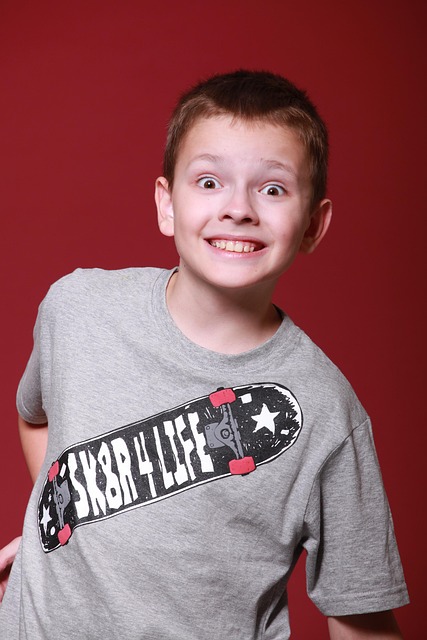Teen depression, characterized by persistent sadness and loss of interest, impacts daily life and can lead to social withdrawal and academic struggles. Creative therapies like art, music, and writing provide safe outlets for emotional expression, helping teens process complex feelings and fostering self-awareness. These non-verbal forms of therapy empower teens to participate actively in their healing journey, reducing anxiety symptoms associated with depression, and offer unique, powerful approaches to treating teenage depression.
Teen depression is a serious mental health issue, yet often overlooked. In this article, we explore an innovative approach to treatment: creative therapies. Art, music, and writing offer teens a unique outlet to express their emotions, fostering healing and self-discovery. We delve into the impact of these therapeutic practices, providing insights on how they can be integrated into comprehensive treatment plans for better managing teen depression. Discover the power of creativity as a catalyst for positive change.
Understanding Teen Depression: The Impact and Challenges
Teen depression is a serious mental health issue that significantly impacts adolescents, affecting their daily functioning and overall well-being. It’s essential to recognize that this condition goes beyond typical teenage mood swings; it involves persistent feelings of sadness, hopelessness, and loss of interest in activities once enjoyed. The impact can be profound, leading to social withdrawal, academic difficulties, and, in severe cases, even self-harm. Understanding the nuances of teen depression is crucial as it enables us to provide effective therapy for teenage depression.
Navigating this challenge often requires a multifaceted approach, and creative therapies emerge as powerful tools. Art, music, and writing offer unique avenues for expression and healing. These therapeutic methods allow teens to process their emotions in a safe and non-threatening way, fostering self-awareness and providing an outlet for feelings that may be difficult to articulate verbally. By engaging in creative activities, teenagers can subtly communicate their inner struggles, making it easier for therapists to identify underlying issues and tailor interventions accordingly.
Creative Therapies as a Powerful Tool for Healing
Creative therapies, including art, music, and writing, offer a powerful tool for healing teen depression. These non-verbal forms of expression allow teens to process complex emotions in a safe and controlled manner. Through artistic mediums, individuals can externalize their internal struggles, gaining new perspectives and insights into their mental health challenges. For example, painting or drawing may help visualize and release pent-up feelings, while writing can encourage reflection and self-discovery.
Incorporating creative therapies into treatment plans has shown significant benefits for adolescents dealing with depression. It provides an alternative outlet for communication, helping teens who might find it difficult to verbalize their experiences. This approach fosters a sense of empowerment, encouraging active participation in their mental health journey. Moreover, the act of creating can be therapeutic itself, promoting relaxation and reducing symptoms of anxiety often associated with teenage depression.
Art, Music, and Writing: How They Can Help Teens Express Themselves
Art, music, and writing offer powerful tools for teens dealing with depression, providing unique avenues for self-expression and emotional release. These creative therapies allow individuals to convey their feelings and experiences in ways that might be challenging using words alone. For instance, a painting can capture complex emotions and tell a visual story, while a musical composition can echo the rhythm of one’s heart or the ebb and flow of their moods. Similarly, writing becomes a sanctuary where teens can pen their thoughts, explore their identities, and challenge negative thought patterns.
Through artistic expression, teens can transform their inner turmoil into tangible forms, fostering a sense of ownership and control over their emotional states. This process encourages self-awareness, helps break down barriers, and provides an outlet for releasing pent-up emotions. Engaging in creative therapies can be liberating, offering a much-needed respite from the weight of depression and promoting a healthier relationship with one’s mental health.
Integrating Creative Therapies into Treatment Plans: Best Practices and Benefits
Integrating creative therapies into treatment plans for teen depression offers a unique and powerful approach to healing. Art, music, and writing provide safe outlets for teens to express their emotions, often accessing feelings they might not be able to verbalize. These therapeutic modalities are especially beneficial as they encourage self-exploration and can foster a sense of empowerment in managing mental health challenges.
Best practices in incorporating creative therapies involve tailoring activities to individual preferences and needs. For example, art therapy sessions might include various mediums like painting, sculpting, or collage to help teens visualize and externalize their inner worlds. Music therapy could range from listening to calming melodies to composing personal songs. Writing therapies may involve journaling prompts, poetry, or even dramatic writing exercises. This personalized approach ensures that the chosen creative activity resonates with each teen, enhancing engagement and potential for positive outcomes in their therapy journey.
Creative therapies offer a unique and effective approach to addressing teen depression, providing an outlet for self-expression and emotional release. By integrating art, music, and writing into treatment plans, professionals can enhance traditional therapeutic methods, fostering resilience and personal growth in young minds. This holistic strategy not only complements but revolutionizes the way we support teens navigating their mental health challenges, ultimately improving their overall well-being. For those seeking innovative therapy for teenage depression, creative arts-based interventions present a promising path towards healing and recovery.
